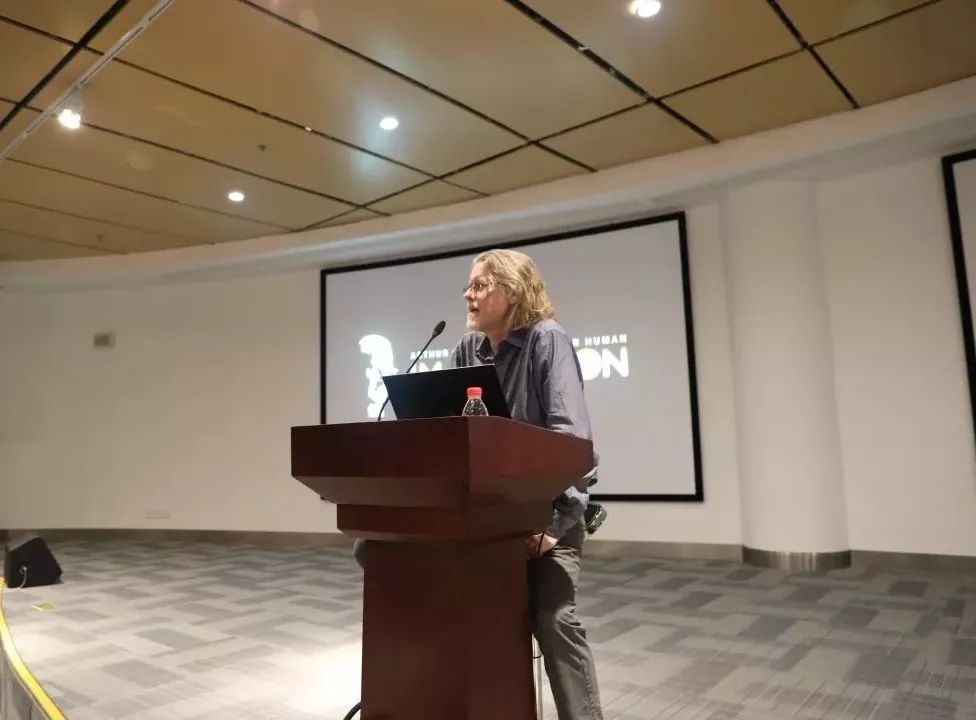Topic
The Art and Science of Imagination
Date
Oct. 12 (FRI.), 2018 18:00
Venue
SIST Auditorium, ShanghaiTech
Speaker
Sheldon Brown
On October 12, 2018, Director of Arthur C. Clarke Center for Human Imagination, Sheldon Brown came to ShanghaiTech to present his latest scientific research and unique insights into art. Sheldon researched into imagination with new approaches to neuroscience, cognition, and computer science.

At the beginning of the lecture, Sheldon presented his project, Scalable City, where users from all over the world can participate in the construction of the game world by manipulating remote sensing. This is a bizarre virtual world. Once the user advances, the house and car where they are going to will start to fold. The textures of different physical spaces are twisted together, and the invisible tornado raging, bringing everything on the ground into the air. The roads will automatically extend and rotate, and the mountains will rise to support them. Eventually, all the winding roads will form a beautiful mosaic together.
“We want to reconstruct those things that people are familiar with and show them different aspects.” Sheldon tried to collect and study the game participation tendencies of users in different regions through this pioneering artistic method, and to study people's acceptance of new things and the way they handle it. Sheldon mentioned that the entire project was not a one-time process, and they repeatedly modified and improved the program as a constant interactive experience. “What we are doing is not to cater the experience, but to make them confused and let them think.” Sheldon’s program automatically records people’s reactions and plots them into a heat map. After several years of data collection, they found that people tend to stay longer for a few specific patterns and colors.

“Art is the product of imagination.” Sheldon showed us a few 3D space paintings. Artists can use a perspective relationship to make a room look like a grassland. At the same time, he mentioned that imagination is everywhere, such as memories which are also imagination. Sheldon has done an experiment to let people draw familiar things in their lives, but even so, most people would do art processing. He believes that the memory of human is the product of imagination, but the object is the actual existence of things, this is like the ideal state of Plato, the real reality is unobservable and the reality in people's cognition is only its projection.

Finally, Sheldon gave an idea that the speed of human development is strongly related to imagination. He showed the nerve cells of Neanderthals and the nerve cells of modern humans. In contrast, modern humans are more regular and have longer, dense synapses. This structure makes it easier for the brain to link abstract concepts to each other. Based on the existing concepts, imagine a whole new world. From algebra to physics, from geometry to art, imagination is rain, irrigating the fertile soil of the human brain.


